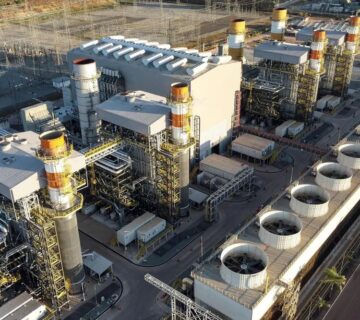The electric power crisis in Brazil’s Amapá state could jeopardize the schedule of Eneva’s 126MW Azulão–Jaguatirica II natural gas-fired power project, in Boa Vista, capital of fellow northern state Roraima.
In a letter sent to regulator Aneel, the Brazilian company expressed its concern that the transfer of one of the Boa Vista substation’s two transformers to the Macapá substation in Amapá to end the blackout there could impact Azulão-Jaguatirica II’s schedule.
“In this context, considering the current status of the construction works, the critical date for beginning testing operations of the generation units is May 28, 2021, when the power transformers must be installed and in operation at the substation,” the company said.
According to Eneva, a delay in the commercial operation of Azulão-Jaguatirica II due to the postponement of testing operations could have an impact of 50mn reais (US$9.74mn) a month on revenues.
The company stressed that the project would contribute to energy security for Roraima state, which as an isolated system is fueled by diesel-fired plants with high levels of emissions and costs.
“These costs are shared with electric power consumers all over the country through the payment of the CDE [energy development charge], for which electric power generation in isolated systems totaled 7.49bn reais in 2020,” Eneva said.
The firm added that, once in operation, Azulão-Jaguatirica II will reduce gas emissions by 35% and costs by 26% in the region.
 Source: Eneva
Source: Eneva
BLACKOUT RISK
Eneva’s warning comes less than a week after Aneel set the red flag (level 2) for December, increasing power rates as water reservoirs at hydro dams reached low levels, forcing grid operator ONS to activate thermoelectric plants.
After the watchdog’s decision, President Jair Bolsonaro said on a social network that the measure was necessary to avoid a national blackout.
An electric power expert who asked not to be named told BNamericas he does not believe there is such a risk. “Today, the power system has thermoelectric generation reserves that would sustain energy demand along with wind and solar power plants, even under low rainfall levels during the humid period,” he said.
According to ONS, by December 31 water reservoir levels are expected to be at 54.2% of capacity in the northeast, 20.1% in the north, 15.1% in the southeast/center-west and 9.6% in the south.
Paulo Arbex, president of ABRAPCH, the association of small and mini hydro plants, told BNamericas the situation will only be solved with the construction of new reservoirs for human water consumption, irrigation and energy generation.
“Brazil needs to urgently resume the construction of multiuse water reservoirs with responsibility, rationality and adequate environmental care,” he said.
BNamericas asked Aneel and the mines and energy ministry to comment on the matter, but neither responded.
HYDROLOGICAL RISK
On Tuesday, Aneel approved the resolution that will regulate the new conditions for the renegotiation of the electric power generation hydrological risk.
Known as GSF (generation scaling factor), the indicator measures the shortfall between a hydroelectric plant’s physical guarantee and the energy that is effectively generated.
With the severe drought in Brazil in recent years, only a fraction of hydro dams’ contracted energy was dispatched in order to preserve water reservoirs. As a result, the power sold but not generated became exposed to the short-term energy market, leading hydro generation companies to file lawsuits to avoid paying for such exposure.
The issue has impacted Brazil’s electric power sector since 2015 to the tune of close to 9.6bn reais, according to the electric power commercialization chamber (CCEE).
Fonte: https://www.bnamericas.com/en/analysis/amapa-crisis-could-jeopardize-roraima-power-project






No comment